MEETING IN SPAIN
From the 8th to the 12th of October, the third mobility of the “Unesco Passport” project took place in our village, Pontedeume, within the Erasmus + European Program, a project in which we have been involved for the last two academic years, together with our partner countries (Croatia, Italy and Cyprus).
The common thread of the project is World Heritage, both material and intangible. That is why, during these days of stay in our country, we have carried out different activities that have promoted the knowledge of a series of monuments that are considered World Heritage by UNESCO. Furthermore, the Mediterranean diet is another important element in the project, since these four countries enjoy a similar lifestyle.
Next, we detail the activities that have been carried out during this third mobility in Spain.
Day 1
A welcome ceremony was held in Casa da Cultura. It was chaired by the Mayor of Pontedeume, Bernardo Fernández, the Councilor for Sports, Joshua Dopico, the headmistress of CPR San José, Carmen Rodríguez, and the members of the Erasmus+ team.
In addition to a warm reception by the authorities, our visitors were shown a video of our town, so they could know the most important landmarks and monuments in our town. Next, each of our students gave an identification card to their guests, as well as a bag which contained different welcome details. To conclude the event, we had the opportunity to enjoy the performance of the folk group "Airiños do Eume", who played some traditional music for our visitors.
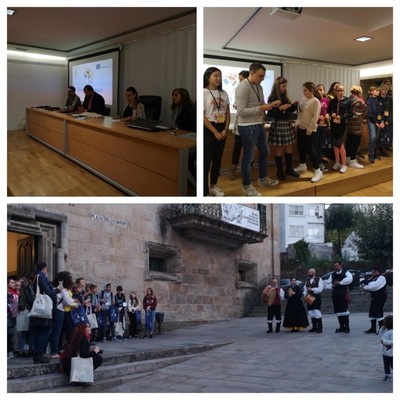
Day 2:
We started the morning with a welcome ceremony at our school, encouraging the participation of the entire educational community in the project. In this act, the World Heritage of our region was presented: the Tower of Hércules, the historic centre of Santiago de Compostela and the Roman Wall in Lugo. Then, each of the countries presented an important song from their culture and tradition, so that we had the chance to learn a little more about them.
After closing the event, two interesting workshops took place: one on Celtic symbols, in which the students could make a beautiful pendant and a photo frame with clay, and another one in which they made a model recreating the Tower of Hercules and the Wall of Lugo with DAS paste.
Moreover, we enjoyed a food tasting during the break. We tried a lot of typical Mediterranean food, which is another important common thread in the project. Each country brought typical food and we were able to share interesting information on gastronomy and typical dishes from Italy, Croatia and Cyprus.
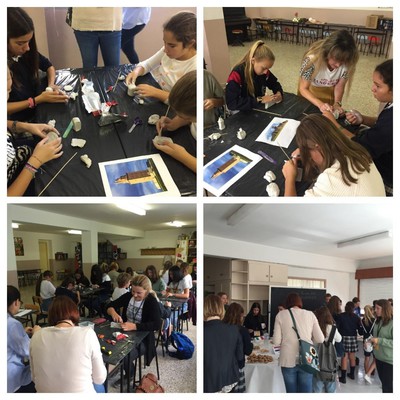
After having lunch together in the school, we carried out a tour through Pontedeume in the afternoon. The Spanish students showed and explained the most emblematic places in our town, as well as part of its history.
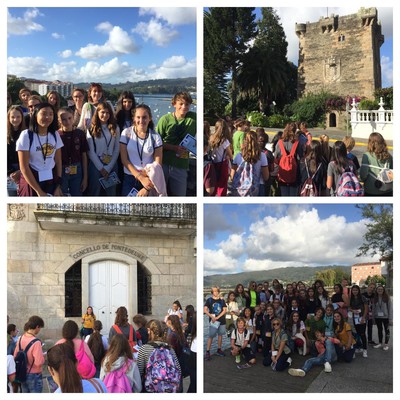
Finally,and to put an end to the day, our students’ parents organized a visit to the Fragas do Eume, which is considered as one of the most important Atlantic natural parks in Europe. There, they made the so-called "Ruta do Muiño" (The Mills Route) and could appreciate the grandeur of this jewel of nature.
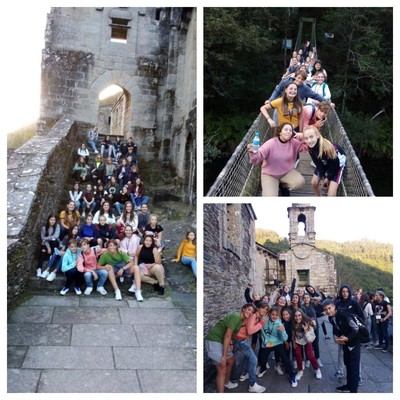
Day 3:
This was an intense day, since we carried out two different visits. The first was in A Coruña: there we visited the San Antón Castle, where we could enjoy wonderful historical vestiges of the city belonging to past times, as well as have a look at the great views of the entrance of the estuary.
Next, we took a walk along Calle Real, where we enjoyed some free time. We also made a stop at María Pita Square, where we learnt the history of this famous Galician female hero.
Then, we visited to the Tower of Hercules, declared as a World Heritage Site in 2009. There we learnt the legend of Hércules and the giant Gerión and we could see the city from the top of the tower.
And then, we travelled to Santiago de Compostela.
Once there, we divided into two groups and visited the wonderful Pórtico de la Gloria, which has been recently restored.
After this visit, we could enjoy the most entertaining activity of the day: a treasure hunt through the old town that helped us know what the center of the capital of Galicia is like, as well as enjoy some time with our new foreign friends.
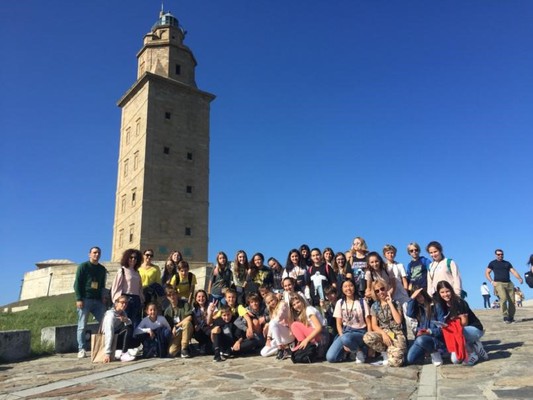
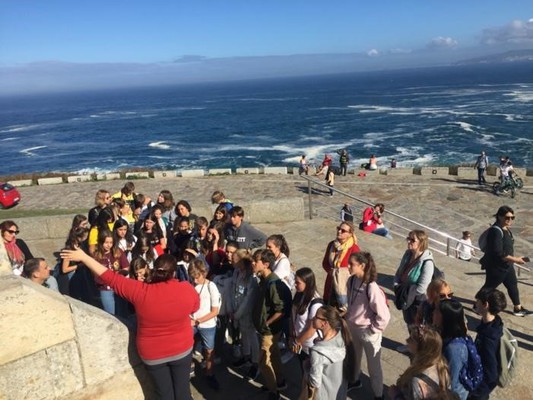
Day 4:
On our last day, we visited Lugo and its Wall, named a World Heritage Site by Unesco in 2000. There, we enjoyed a walking tour along the monument, as well as a visit to the Interpretation Center of the wall, where we could get to know some interesting information about its history.
After that, we enjoyed a picnic at Rosalía de Castro Park. It was a moment of cultural exchange between students from different countries. In the afternoon, we toured the old town, where we discovered small squares and some beautiful alleys that are typical in this part of Galicia.
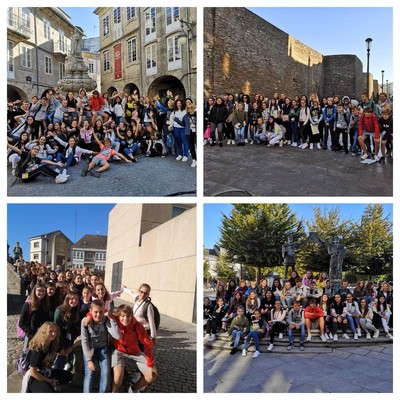
Finally, we enjoyed a farewell dinner, and all the students were given their Erasmus accreditations and diplomas. On the next day, we said goodbye to our visitors with laughter and tears.
It has been an intense and beautiful experience we will never forget!